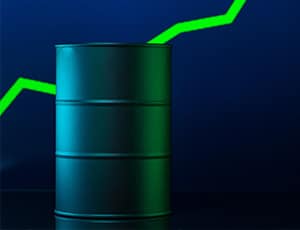
Chris Kuehl
Managing Director • Armada
There has been a lot of ferment in the oil and gas sector of late. That was before the outbreak of open war between Israel and the extreme militants in Hamas. Within hours the per barrel price soared by over $4. These prices had been back in the mid-80s as the markets were reacting to hints that Saudi Arabia was thinking about hiking production. Now, all bets are off. Not that Israel or Gaza produce oil but the Arab world will be watching Israel’s reaction. If there is a major campaign it is expected that oil states will react harshly.
That the oil market is volatile is generally the understatement of the year but in the last several months there had been some stability and that had allowed the per barrel price to settle into the 70s for the most part. Frankly, that was something of a shock as the expectation was that oil would be seeing a massive surge in price due to the sanctions imposed on the second largest oil producer in the world. Turns out that Russia found numerous outlets for their oil exports and are actually shipping more now than they did before the sanctions. Europe found other suppliers and they were able to get what they needed and at a decent price. Given that, why is the per barrel price suddenly reaching the upper 80s and even 90s. At the time of this writing Brent crude was in the mid-90s and WTI was in the low 90s. There are basically three motivators for all this. The two most obvious have been demand and supply related. The economic recovery in the US has been more robust than expected and that feeds demand back to normal levels of 20 million barrels a day. On the demand side there is the statement from Saudi Arabia and several of the OPEC states suggesting they will keep reducing output into 2024. The US can replace a lot of that volume in the next few months but there is some trepidation as producers worry about what next year’s economy looks like. The wild card has been the refinery challenges this year. There have been maintenance issues and excessive heat forced shutdowns in Texas and restricted supply for over three months.
The long-term concern for the oil and gas sector has been investment. In the last few years there has been a dramatic reduction in investor interest based on three factors. The first was the sharp decline in demand due to the pandemic but as the restrictions lifted that demand started to come back. The second factor was the overall investor worry about economic growth – the factor that has been fueling the inversion in the bond market. But the most challenging issue has been the development of alternate energy. There is a great deal of emphasis on electric vehicles, wind power, solar power and every other option. The industry looked at all this and concluded that there was little incentive to invest further. Now this attitude has started to shift. The Energy Information Agency now asserts that the US will remain over 75% dependent on fossil fuel through the year 2070. The investor is now drifting back to the sector as they acknowledge that demand is spiking for these traditional energy sources.
The oil profits have been substantial – enough that these companies are attracting a lot more political attention. There are serious discussions around windfall taxes. The part that many manage to miss is that oil companies have very little control over their profits and revenue as the prices are set by the market for oil. The markets crashed in 2020 and the per barrel price was well under $20. Today the markets are reacting to higher demand levels and limited supply and the per barrel price surged. The oil producers are accustomed to these periods of feast and famine and right now they are faced with decisions regarding what they want to spend on. The US is in good shape from a production point of view with capacity to produce as much as 16 million barrels a day. The real issue is refinery capacity as there have been very few new facilities built in the last thirty years. The existing refineries are in need of repair and this year they have been affected by excessive heat and there is always the issue of hurricanes and other storms. Overall capital spending has been setting records for the last few years and the oil and gas sector has been part of this as well. Outside investors are getting more engaged and that stimulates the companies themselves to commit more of their own profit. Many of the oil companies are reinventing themselves as energy companies and are dividing their investment activity between traditional fossil fuel and the alternatives.
Oil prices had been hovering between $70 and $75 bpd over the last year but that changed in the last month or so as the OPEC+ members renewed their commitment to getting the per barrel price back into the 90s. The price has been in the high 80s and low 90s and could go higher. The U.S. has the ability to make up for the deficit but there has been reluctance to boost output as long as there is a threat of economic slowdown. West Texas Intermediate has been about four dollars a barrel less than Brent crude, but both have been in the 90s of late. The EIA predicts that prices in the 70s will return this year and into 2024 but that depends on factors such as hurricanes and geopolitics.
Recent Posts
- The All Powerful and Influential Automotive Sector July 10, 2025
- Tariff Fatigue June 24, 2025
- Obtaining Financial Records from Hesitant Customers May 29, 2025
- What Happens Next? May 8, 2025
- Three Reasons to Ignore Recession Talk (and One Reason Not to) April 24, 2025
- Stability in Uncertain Times: Insights on Small Business Performance and Market Trends March 26, 2025











